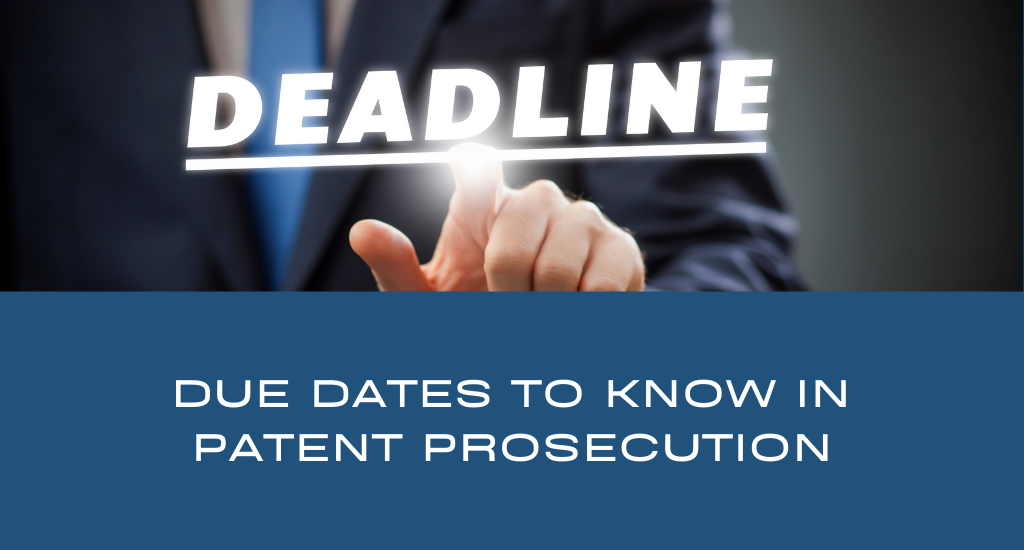- June 30, 2021
- Posted by: mbipuser
- Categories: Ip Topics, Latest article

Due Dates to Know in Patent Prosecution
There are many deadlines, some of which are non-extendable, that surround the patent application process. Knowing the various due dates of patent prosecution will arm an applicant with knowledge that can help the ease and progress of an application.
Starting with the Information Disclosure Statement (IDS), where an applicant must disclose to the Office all known prior art that may relate to their pending patent application, there may be additional fees if not filed within the correct timeframe. Depending on when the IDS is filed in the application process, the applicant might have to submit a statement and/or pay extra fees. Also, there are no extensions of time allowed for IDS filing, with some exceptions.
The next step is usually an Office action, or an official letter sent from the USPTO, where the patent Examiner states any legal problems with the pending patent application. The applicant has a maximum time of 6 months to reply to an Office action on the merits, but there is usually a shorter statutory period of 3 months. Fear not, for the Office action will state if and what the shortened statutory period to reply is. If it is necessary, the applicant may extend the time for reply by 4 months to reach the maximum period of 6 months, by petitioning for an extension of time and filing the appropriate fees.
On some occasions, an Examiner may find that there are multiple inventions in a single patent application and will issue a Restriction Requirement in an Office action. The reply to a Restriction Requirement, where an applicant chooses or “elects” an invention for prosecution, has a shortened statutory period of 2 months, which the applicant may file for an extension of the full statutory period of 6 months.
If there is missing information in the original patent application, the Office will send a Notice to File Missing Parts of an application, to which the applicant must file a response to the Missing Parts. The Office usually give 2 months for the response, which will be indicated on the Notice. The applicant may seek an extension for up to 5 months, and longer time periods are sometimes permitted as well.
After a patent is rejected two or more times, an applicant may file a Notice of Appeal to pursue an appellate review of the Examiner’s rejections from The Patent Trial and Appeal Board (PTAB). The Notice can be filed a maximum of 6 months from the last Office action and the applicant must pay an Appeal fee. Once the Notice of Appeal is filed, the applicant has 2 months, with a possible 5-month extension, during which they may file an Appeal Brief.
As soon as PTAB replies to the Appeal Brief, the applicant pays an Appeal Forwarding fee within 2 months of receiving the reply and has an option of filing a reply brief within the same timeframe. There is only one reply brief allowed during an appeal to PTAB and there are no allowable extensions of time.
If the PTAB decision is made and rejections of the Examiner are affirmed, the applicant has a few choices of how to proceed with their response. They have 63 days to decide if they
want to apply for a Request for Continued Examination (RCE) or appeal further to the District Court and have 2 months if they choose to file for a Rehearing of the case. Neither the filing for RCE or Rehearing have an allowable extension of time, whereas an extension upon a written request may be granted to appeal to the District Court.
If there are any minor issues that still need to be resolved by the applicant but prosecution on the merits is closed, Ex Parte Quayle comes into play. An applicant has a shortened statutory period of 2 months, with a possible extension to the full statutory period of 6 months, to resolve these issues.
Once patent prosecution ends, and the Examiner sends a Notice of Allowance granting the issuance of the patent, the applicant must pay issue fees within three months of the Notice. There are no allowable extensions for paying issue fees.
